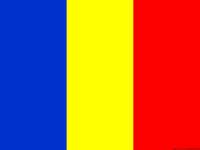''...tour guides Rozle and Klemen worked tirelessly and took care of us like family...''
Destinations

ROMANIA
- GENERAL INFORMATION
Location:Southeastern Europe, bordering the Black Sea, between Bulgaria and Ukraine
Border Countries: Bulgaria 605 km, Hungary 424 km, Moldova 683 km, Serbia 531 km, Ukraine 601 km
Area: 238,391 sq km
Population:21,599,736
Capital City: Bucharest (population 1.868 million)
Religions:Eastern Orthodox 81.9%, Protestant 6.4%, Roman Catholic 4.3%, other (includes Muslim, atheist and unspecified) 7,4%
Government type:semi-presidential republic
Coastline: 225 km (Black Sea)
Highest point: Moldoveanu 2,544 m
Roadways: 84,185 km, paved: 49,873 km (includes 337 km of expressways), unpaved: 34,312 km
Time difference: UTC/GMT +2:00
National currency:Romanian Leu
International dialing number: +40
Electricity:Romania's electrical current is 230 V; 50 cycles and sockets take the standard continental European dual round-pronged plugs.
- VISA
For visitors from most countries (EU, USA, etc) a visa is not needed. Only a valid passport is required
- CLIMATE
temperate; cold, cloudy winters with frequent snow and fog; sunny summers with frequent showers and thunderstorms
- TERRAIN
central Transylvanian Basin is separated from the Moldavian Plateau on the east by the Eastern Carpathian Mountains and separated from the Walachian Plain on the south by the Transylvanian Alps
- LANGUAGES
Romanian (official) 85.4%, Hungarian 6.3%, Romany (Gypsy) 1.2%, other 1%, unspecified 6.1%
- ETHNIC GROUPS
Romanian 83.4%, Hungarian 6.1%, Roma 3.1%, Ukrainian 0.3%, German 0.2%, other 0.7%, unspecified 6.1%
- HISTORICAL BACKGROUND
The principalities of Wallachia and Moldavia - for centuries under the suzerainty of the Turkish Ottoman Empire - secured their autonomy in 1856; they were de facto linked in 1859 and formally united in 1862 under the new name of Romania. The country gained recognition of its independence in 1878. It joined the Allied Powers in World War I and acquired new territories - most notably Transylvania - following the conflict. In 1940, Romania allied with the Axis powers and participated in the 1941 German invasion of the USSR. Three years later, overrun by the Soviets, Romania signed an armistice. The post-war Soviet occupation led to the formation of a communist "people's republic" in 1947 and the abdication of the king. The decades-long rule of dictator Nicolae CEAUSESCU, who took power in 1965, and his Securitate police state became increasingly oppressive and draconian through the 1980s. CEAUSESCU was overthrown and executed in late 1989. Former communists dominated the government until 1996 when they were swept from power. Romania joined NATO in 2004 and the EU in 2007.
- ECONOMY OVERVIEW
Romania, which joined the EU on 1 January 2007, began the transition from communism in 1989 with a largely obsolete industrial base and a pattern of output unsuited to the country's needs. Romania's macroeconomic gains have only recently started to spur creation of a middle class and to address Romania's widespread poverty. Corruption and red tape continue to permeate the business environment.
In the aftermath of the global financial crisis, Romania signed a $26 billion emergency assistance package from the IMF, the EU, and other international lenders, but GDP contracted until 2011. In March 2011, Romania and the IMF/EU/World Bank signed a 24-month precautionary standby agreement, worth $6.6 billion, to promote fiscal discipline, encourage progress on structural reforms, and strengthen financial sector stability; no funds were drawn. In September 2013, Romanian authorities and the IMF/EU agreed to a follow-on standby agreement, worth $5.4 billion, to continue with reforms. This agreement expired in September 2015, and no funds were drawn. Progress on structural reforms has been uneven, and the economy still is vulnerable to external shocks.
Economic growth rebounded in 2013-15, driven by strong industrial exports and excellent agricultural harvests, and the fiscal deficit was reduced substantially. Industry outperformed other sectors of the economy in 2015. Exports remained an engine of economic growth, led by trade with the EU, which accounts for roughly 70% of Romania trade. Domestic demand was a second driver, due to the mid-2015 cut, from 24% to 9%, of the VAT levied upon foodstuffs. In 2015, the government of Romania succeeded in meeting its annual target for the budget deficit, the external deficit remained low, even if it rose due to increasing imports. For the first time since 1989, inflation turned into deflation, allowing for a gradual loosening of monetary policy throughout the period.
An aging population, significant tax evasion, insufficient health care, and an aggressive loosening of the fiscal package jeopardize the low fiscal deficit and public debt and are the economy's top vulnerabilities.
- MAIN INDUSTRIES
electric machinery and equipment, auto assembly, textiles and footwear, light machinery, metallurgy, chemicals, food processing, petroleum refining, mining, timber, construction materials
- FLAG DESCRIPTION
three equal vertical bands of blue (hoist side), yellow, and red; modeled after the flag of France, the colors are those of the principalities of Walachia (red and yellow) and Moldavia (red and blue), which united in 1862 to form Romania


